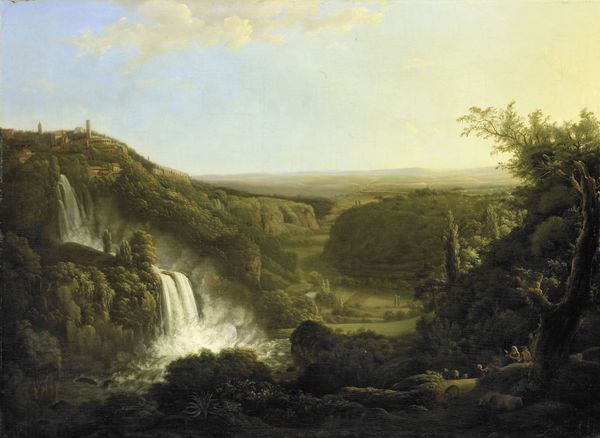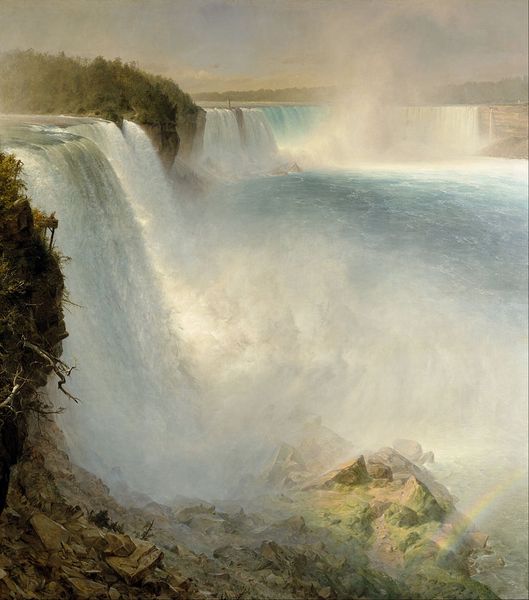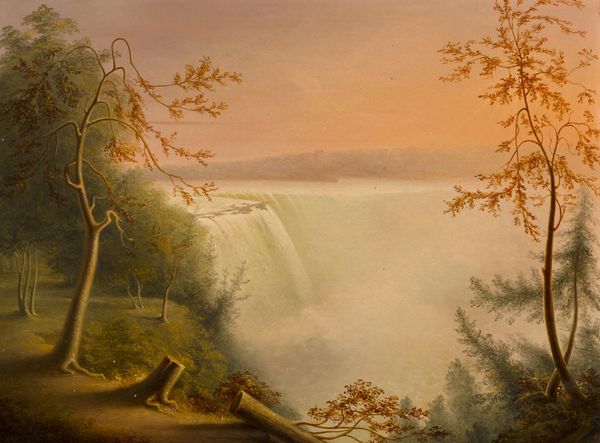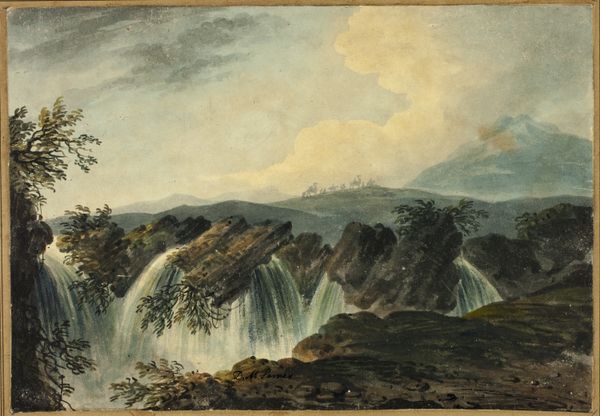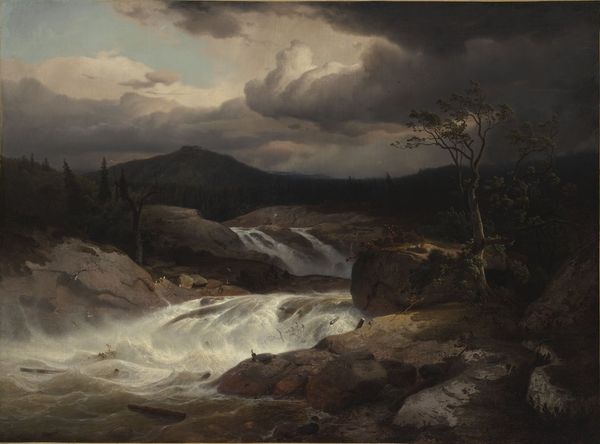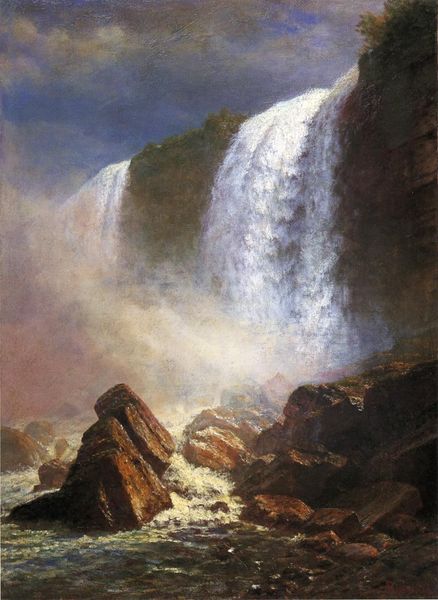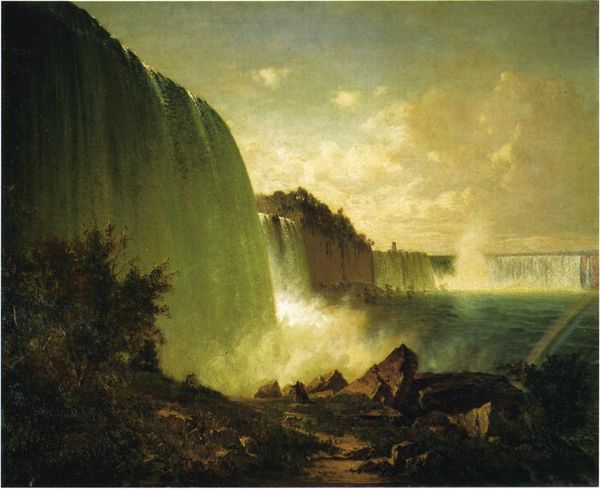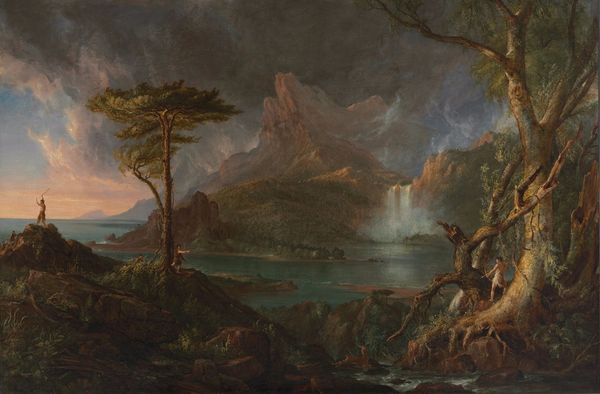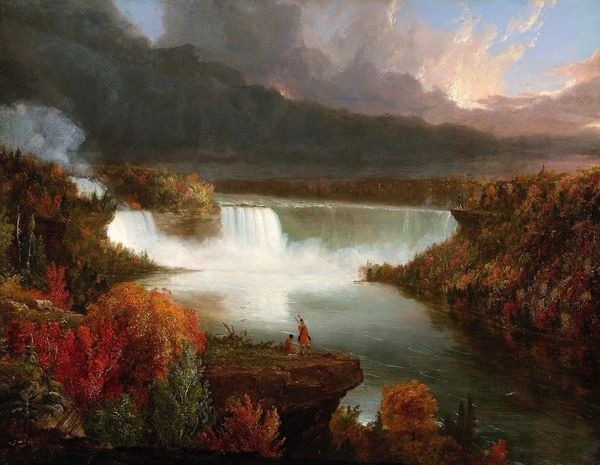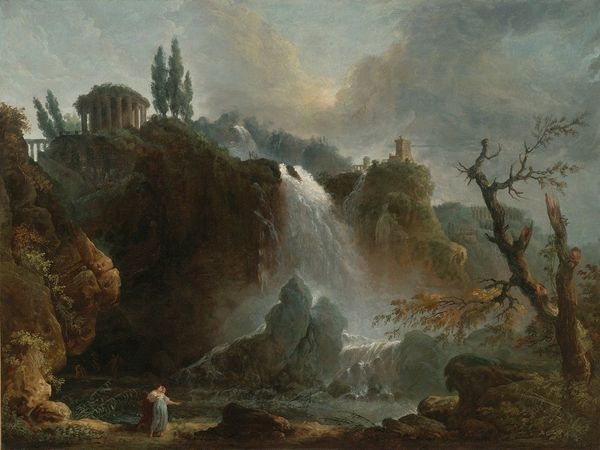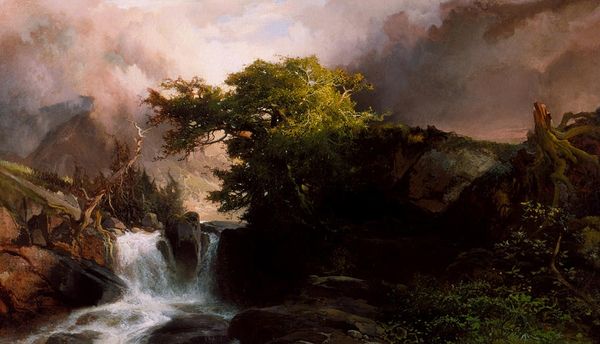
Copyright: Public domain
Paul Kane painted "The Cackabakah Falls" in the mid-19th century, capturing a moment of encounter between European artistic traditions and the North American landscape. Kane was commissioned to document Native American life. Here, he depicts a waterfall with Indigenous figures in the foreground, possibly engaging in a ceremony. The sublime landscape, a popular theme in European art, is here reinterpreted through the lens of colonial expansion. Consider how the dramatic depiction of nature might have served to romanticize the idea of the "New World," even as Indigenous peoples were being dispossessed of their lands. The very act of painting these scenes was implicated in the project of nation-building, framing the landscape as a resource to be claimed and exploited. To understand the nuances of this painting, we can delve into archives, missionary records, and Indigenous oral histories to challenge the dominant narratives of the time. Ultimately, we can see how art both reflects and shapes our understanding of history.
Comments
No comments
Be the first to comment and join the conversation on the ultimate creative platform.
